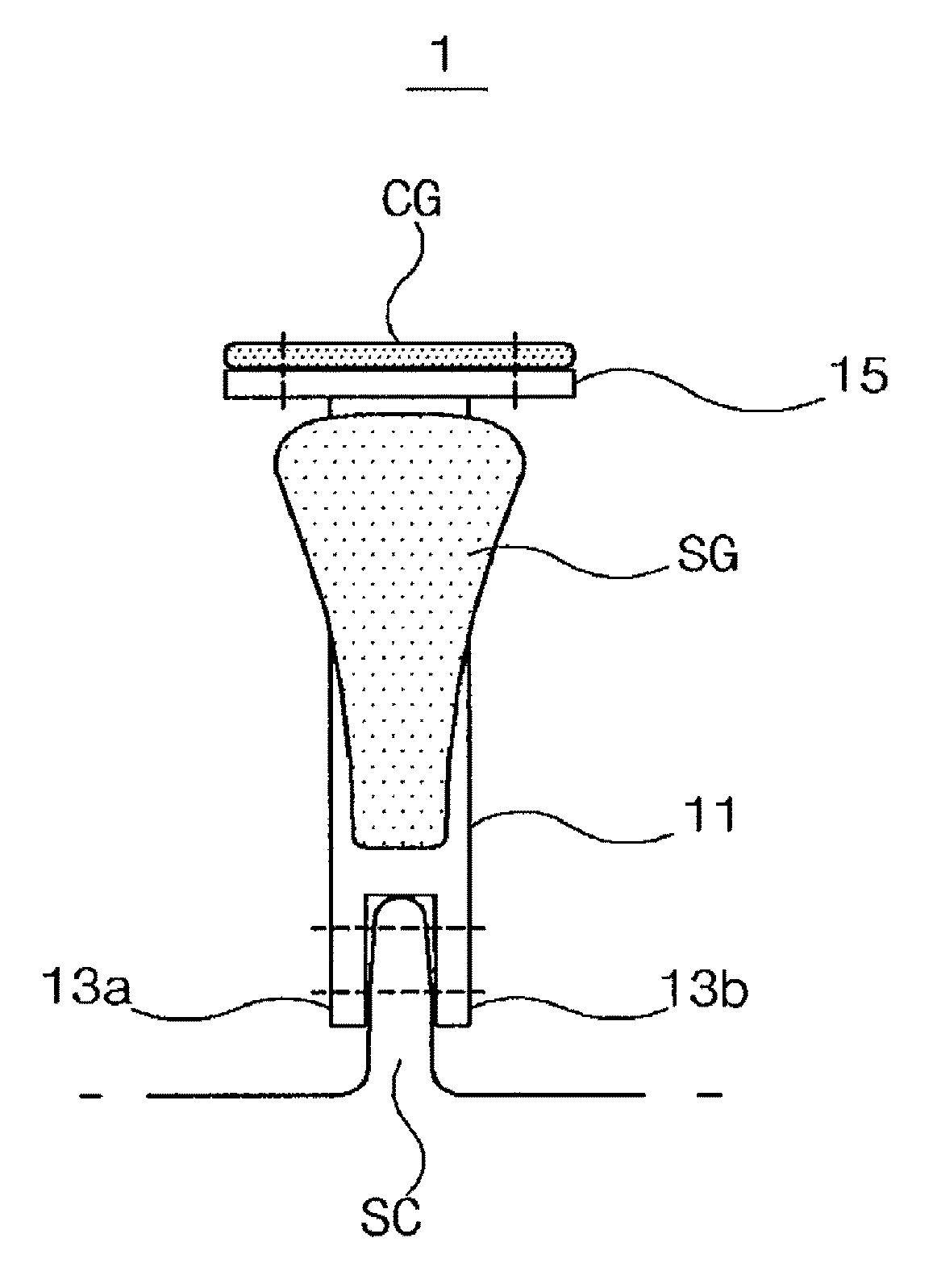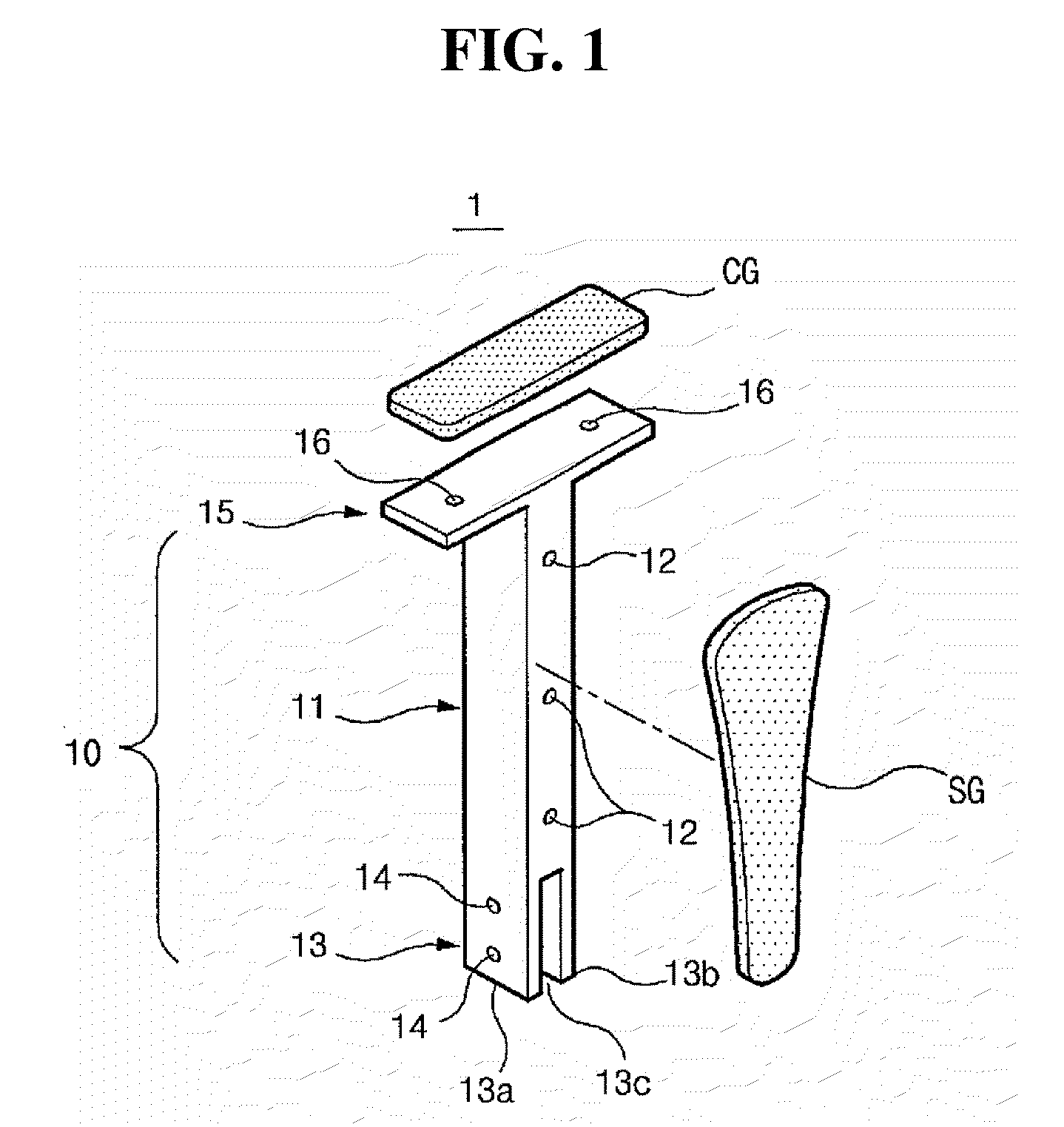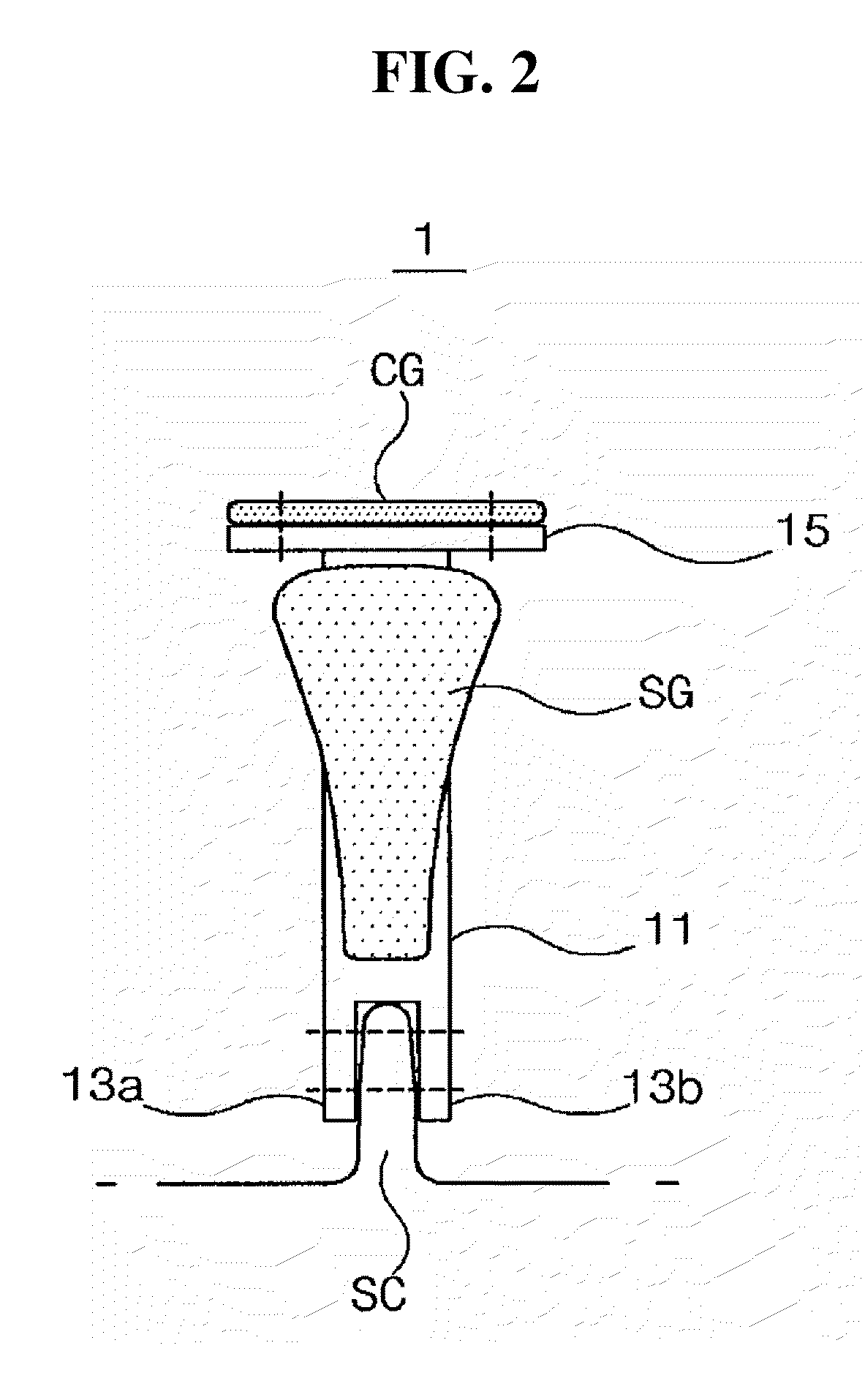Aiding apparatus for nasal cartilage strut in nasal tip surgery
a technology of cartilage struts and nasal tip, which is applied in the field of nasal tip plasty, can solve the problems of limited use of alloplastic materials, red nose tip, and frequent penetration of alloplastic materials into the nasal tip, and achieve the effect of facilitating caudal septal extension gra
- Summary
- Abstract
- Description
- Claims
- Application Information
AI Technical Summary
Benefits of technology
Problems solved by technology
Method used
Image
Examples
first embodiment
[0067]FIG. 1 is an exploded perspective view showing the first cartilage scaffold complex 1 using the first aiding apparatus for nasal tip plasty, according to the first embodiment of the present invention, and FIG. 2 is a view showing the state in which the first cartilage scaffold complex 1 is secured to the upper border of septal cartilage.
[0068]As shown in FIGS. 1 and 2, the aiding apparatus 10 for nasal tip plasty according to the first embodiment of the present invention includes a strut part 11 and a holding part 13.
[0069]Based on clinical tests, a material which is capable of minimizing known medical side effects, including interference with the blood supply to a nasal tip or allergies, is selected for the aiding apparatus 10.
[0070]Preferably, the selected material is a non-toxic and biocompatible non-absorbable polymer or a non-toxic and biocompatible biodegradable polymer.
[0071]The strut part 11 serves as a columellar support for the elevation of the nasal tip.
[0072]Furthe...
second embodiment
[0088]FIG. 3 is an exploded perspective view showing the second cartilage scaffold complex 3 using the second aiding apparatus for nasal tip plasty, according to the second embodiment of the present invention, and FIG. 4 is a view showing the state in which the second cartilage scaffold complex 3 is secured to the upper border of septal cartilage.
[0089]As shown in FIGS. 3 and 4, the aiding apparatus 30 according to the second embodiment is similar in construction and function to the aiding apparatus 10 according to the first embodiment. However, unlike the first embodiment, serrated parts 34a and 34b are formed on the inner surfaces of leg parts 33a and 33b.
[0090]That is, the serrated parts 34a and 34b engage with each other, so that septal cartilage SC is held between the serrated parts. Thus, the cartilage scaffold complex 3 can be rapidly held to the upper border of the septal cartilage in a narrow operation space without the stitching operation.
[0091]Further, the aiding apparat...
third embodiment
[0092]FIG. 5 is an exploded perspective view showing the third cartilage scaffold complex 5 using the third aiding apparatus for nasal tip plasty, according to the third embodiment of the present invention, and FIG. 6 is a view showing the state in which the third cartilage scaffold complex 5 is secured to the upper border of septal cartilage.
[0093]As shown in FIGS. 5 and 6, the aiding apparatus 50 of the third embodiment is different from the aiding apparatuses of the first and second embodiments in that a seating part 51a is provided in a strut part 51 so that a cartilage strut ST is seated in the seating part, and the aiding apparatus 50 is made of a biodegradable polymer material.
[0094]In detail, the aiding apparatus 50 serves as a scaffold which is decomposed and disappears after a predetermined period of time has passed.
[0095]One coupling hole 52 or a plurality of coupling holes 52 is formed in the seating part 51a so as to support the cartilage strut ST which is seated in the...
PUM
 Login to View More
Login to View More Abstract
Description
Claims
Application Information
 Login to View More
Login to View More - R&D
- Intellectual Property
- Life Sciences
- Materials
- Tech Scout
- Unparalleled Data Quality
- Higher Quality Content
- 60% Fewer Hallucinations
Browse by: Latest US Patents, China's latest patents, Technical Efficacy Thesaurus, Application Domain, Technology Topic, Popular Technical Reports.
© 2025 PatSnap. All rights reserved.Legal|Privacy policy|Modern Slavery Act Transparency Statement|Sitemap|About US| Contact US: help@patsnap.com



